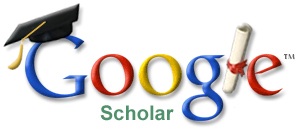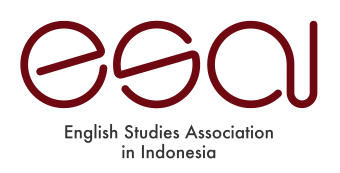THE LECTURERS’ WRITTEN CORRECTIVE FEEDBACK IN WRITING CLASSES: UNIVERSITY STUDENTS’ OPINIONS AND PREFERENCES
Abstract
Writing in English for university students who use English as their second or foreign language can be challenging. This is not only because of the linguistic aspects that may be different from their first language but also because of the non-linguistic aspects such as the content, knowledge, and structure. For such cases, the involvement of a lecturer in their learning process is essential and this can be done by providing written corrective feedback (WCF) to their writing. In order to investigate the university students’ opinions of written corrective feedback and the types of it that are preferred in their writing classroom, this study hence is conducted to gain a better understanding from the students’ point of view. By implementing mixed-method research, the findings revealed major outcomes. Results showed that students generally felt positive about receiving WCF, as it helped identify errors, progress, and weaknesses. However, they felt that WCF alone was insufficient, and a combination of written corrective feedback and verbal feedback was more beneficial. Moreover, the students prefer direct feedback over indirect feedback to build awareness and knowledge about their writing process. They are impartial towards metalinguistic feedback and prefer correction forms with explanations. Lecturers' writing feedback develops critical thinking and revision strategies, encouraging students to research and read widely. Future studies could include longitudinal studies with teacher and student opinions, class observation, and technological advancements, aiming to stimulate new perspectives on written corrective feedback in EFL classrooms.
Keywords
Full Text:
PDFReferences
Ashwell, T. (2000). Patterns of Teacher Response to Student Writing in a Multiple-Draft Composition Classroom: Is Content Feedback Followed by Form Feedback the Best Method? Journal of Second Language Writing, 9(3), 227–257. https://doi.org/10.1016/s1060-3743(00)00027-8
Barkaoui, K. (2007). Teaching Writing to Second Language Learners: Insights from Theory and Research. TESL Reporter, 40(1), 35–48.
Bitchener, J., & Storch, N. (2016). Written Corrective Feedback for L2 Development. Multilingual Matters Limited.
Bitchener, J. (2021). Written Corrective Feedback. The Cambridge Handbook of Corrective Feedback in Second Language Learning and Teaching, 207–225. https://doi.org/10.1017/9781108589789.011
Brown, D. (2012). The Written Corrective Feedback Debate: Next Steps for Classroom Teachers and Practitioners. TESOL Quarterly, 46(4), 861–867. https://doi.org/10.1002/tesq.63
Casanave, C. (2007). Controversies in Second Language Writing: Dilemmas and Decisions in Research and Instruction. The University of Michigan Press.
Ceylan, O. N. (2019). Student Perceptions of Difficulties in Second Language Writing n. Journal of Language and Linguistic Studies, 15(1), 151-157.
Cumming, A. (2001). Learning to write in a second language: Two decades of research. International Journal of English Studies, 1(2), 1–23.
Cumming, A. (2002). If I had known 12 things... In L. Blanton, & B. Kroll (Eds.), ESL composition tales: Reflections on teaching, 123-134. Ann Arbor, MI: University of Michigan Press.
Dörnyei, Z. (2001). Teaching and Researching Motivation. NY: Longman.
Ellis, R., Loewen, S., & Erlam, R. (2006). Implicit and explicit corrective feedback and the acquisition of L2 grammar. Studies in Second Language Acquisition, 28(02). https://doi.org/10.1017/s0272263106060141
Ellis, R. (2009). Corrective Feedback and Teacher Development. L2 Journal, 1(1). https://doi.org/10.5070/l2.v1i1.9054
Ellis, R. (2012). Understanding Second Language Acquisition. Oxford: Oxford University Press.
Elwood, J. A., & Bode, J. (2014). Student preferences vis-à-vis teacher feedback in university EFL writing classes in Japan. System, 42, 333–343. https://doi.org/10.1016/j.system.2013.12.023
Fazio, R. H. (2001). On the automatic activation of associated evaluations: An overview. Cognition and Emotion, 15(2), 115–141. https://doi.org/10.1080/0269993004200024
Ferris, D. R. (1995). Student Reactions to Teacher Response in Multiple-Draft Composition Classrooms. TESOL Quarterly, 29(1), 52-53. https://doi.org/10.2307/3587804
Ferris, D. R., & Hedgcock, J. (1998). Teaching ESL Composition: Purpose, Process, and Practice (1st ed.). Routledge.
Ferris, D., & Roberts, B. (2001). Error feedback in L2 writing classes. Journal of Second Language Writing, 10(3), 161–184. https://doi.org/10.1016/s1060-3743(01)00039-x
Ferris, D. R. (2003). Response to Student Writing: Implications for Second Language Students. Routledge.
Ferris, D. R. (2004). The “Grammar Correction” Debate in L2 Writing: Where are we, and where do we go from here? (and what do we do in the meantime . . .?). Journal of Second Language Writing, 13(1), 49–62. https://doi.org/10.1016/j.jslw.2004.04.005
Ferris, D. R. (2010). Second language writing research and written corrective feedback in SLA. Studies in Second Language Acquisition, 32(2), 181–201. https://doi.org/10.1017/s0272263109990490
Ferris, D. R. (2012). Written corrective feedback in second language acquisition and writing studies. Language Teaching, 45(4), 446–459. https://doi.org/10.1017/s0261444812000250
Greene, J. C., Caracelli, V. J., & Graham, W. F. (1989). Toward a Conceptual Framework for Mixed-Method Evaluation Designs. Educational Evaluation and Policy Analysis, 11(3), 255–274. https://doi.org/10.3102/01623737011003255
Halim, S. W. (2021). PEER ASSESSMENT IN UNIVERSITY LEVEL: A PRELIMINARY STUDY ON THE RELIABILITY. CaLLs: Journal of Culture, Arts, Literature and Linguistics, 7(1), 1. https://doi.org/10.30872/calls.v6i2.3804
Hartshorn, K. J., Evans, N. W., Merrill, P. F., Sudweeks, R. R., Strong-Krause, D., & Anderson, N. J. (2010). Effects of Dynamic Corrective Feedback on ESL Writing Accuracy. TESOL Quarterly, 44(1), 84–109. https://doi.org/10.5054/tq.2010.213781
Hattie, J., Biggs, J., & Purdie, N. (1996). Effects of Learning Skills Interventions on Student Learning: A Meta-Analysis. Review of Educational Research, 66(2), 99–136. https://doi.org/10.3102/00346543066002099
Hendrickson, J. M. (1980). The Treatment of Error in Written Work. The Modern Language Journal, 64(2), 216–221. https://doi.org/10.1111/j.1540-4781.1980.tb05188.x
Huot, B. (2002). Rearticulating Writing Assessment for Teaching and Learning. Utah State University Press.
Hyland, F., & Hyland, K. (2001). Sugaring the pill: Praise and criticism in written feedback. Journal of Second Language Writing, 10(3), 185–212. https://doi.org/10.1016/s1060-3743(01)00038-8
Hyland, K. (2002). Teaching and researching writing. New York: Longman.
Hyland, K. (2006). English for Academic Purposes: An Advanced Resource Book (Routledge Applied Linguistics) (1st ed.). Routledge.
Irwin, B. (2017). Written Corrective Feedback: Student Preferences and Teacher Feedback Practices. IAFOR Journal of Language Learning, 3(2). https://doi.org/10.22492/ijll.3.2.02
Krashen, S. D., & Terrell, T. D. (1989). The Natural Approach: Language Acquisition in the Classroom. Janus Book Pub/Alemany Pr.
Krashen, S. (1994). The input hypothesis and its rivals. Implicit and Explicit Learning of Languages, 45–77.
Kulhavy, R. W. (1977). Feedback in written instruction. Review of Educational Research, 47(2), 211–232.
Kulhavy, R. W., & Stock, W. A. (1989). Feedback in written instruction: The place of response certitude. Educational Psychology Review, 1(4), 279–308. https://doi.org/10.1007/bf01320096
Lalande, J. F. (1982). Reducing Composition Errors: An Experiment. The Modern Language Journal, 66(2), 140–149. https://doi.org/10.1111/j.1540-4781.1982.tb06973.x
Lee, I. (2017). Classroom Writing Assessment and Feedback in L2 School Contexts (1st ed. 2017 ed.). Springer.
Lie, K. (2022). Students’ perceptions and use of teachers’ feedback on written assignments in EFL classrooms at a Swedish upper secondary school [Master’s thesis, Graduate Dalarna University – Sweden]
Lyster, R., & Ranta, L. (1997). Corrective feedback and learner uptake. Studies in Second Language Acquisition, 19(1), 37–66.
Myles, J. (2002). Second language writing and research: The writing process and error analysis in student texts. Teaching English as a Second or Foreign Language, 6(2), 1–19.
Nguyen, N., Nguyen, B., & Hoang, G. (2021). Students’ Perceptions of Teachers’ Written Feedback on EFL Writing in a Vietnamese Tertiary Context. Language Related Research, 12(5), 405–431.
Nugroho, A. (2021). EFL Teachers’ and Learners’ Perception of Written Corrective Feedback in Writing: A Case Study of Indonesian Male and Female Teachers and Learners. Konferensi Linguistik Tahunan Atma Jaya 19, 51–58.
Nugroho, A., & Benecia, C. (2022). INVESTIGATING THE USE OF AUTOMATED WRITTEN CORRECTIVE FEEDBACK TO IMPROVE UNDERGRADUATE EFL STUDENTS’ WRITING PERFORMANCE. Prosiding Konferensi Linguistik Tahunan Atma Jaya (KOLITA), 20(20), 16–23. https://doi.org/10.25170/kolita.20.3773
Raza, K. (2019). Learner Preferences for Teacher Corrective Feedback: A Survey Study of Arab Students from Qatar. Language Teaching Research Quarterly, 11, 43–53.
Reid, J. (1989). English as a second language composing in the higher education: The expectations of the academic audience. In D. M. Johnson, & D. H. Roen (Eds.), Richness in writing: Empowering ESL students, 220-234. NY: Longman.
Riazi, A. M., & Candlin, C. N. (2014). Mixed-methods research in language teaching and learning: Opportunities, issues and challenges. Language Teaching, 47(2), 135–173. https://doi.org/10.1017/s0261444813000505
Saragih, N. A., Madya, S., Siregar, R. A., & Saragih, W. (2021). Written Corrective Feedback: Students’ Perception and Preferences. International Online Journal of Education and Teaching (IOJET), 8(2), 676–690.
Sasaki, M. (2000). Toward an Empirical Model of EFL Writing Processes: An Exploratory Study. Journal of Second Language Writing, 9(3), 259–291. https://doi.org/10.1016/s1060-3743(00)00028-x
Scarcella, R. (2002). Some key factors affecting English learners' development of advanced literacy. In M. J. Schleppegrell & M. C. Colombi (Eds.), Developing advanced literacy in first and second language (pp. 209-226). Mahwah, NJ: Lawrence Erlbaum Associates.
Sheen, Y. (2007). The Effect of Focused Written Corrective Feedback and Language Aptitude on ESL Learners’ Acquisition of Articles. TESOL Quarterly, 41(2), 255–283. https://doi.org/10.1002/j.1545-7249.2007.tb00059.x
Sheen, Y., Wright, D., & Moldawa, A. (2009). Differential effects of focused and unfocused written correction on the accurate use of grammatical forms by adult ESL learners. System, 37(4), 556–569. https://doi.org/10.1016/j.system.2009.09.002
Shute, V. J. (2008). Focus on Formative Feedback. Review of Educational Research, 78(1), 153–189. https://doi.org/10.3102/0034654307313795
Song, G., Hoon, L. H., & Alvin, L. P. (2017). Students’ Response to Feedback: An Exploratory Study. RELC Journal, 48(3), 357–372. https://doi.org/10.1177/0033688217691445
Tangmpermpoon, T. (2008). Integrated approaches to improve students writing skill for English major students. ABAC Journal, 1–9.
Truscott, J. (1996). The Case Against Grammar Correction in L2 Writing Classes. Language Learning, 46(2), 327–369. https://doi.org/10.1111/j.1467-1770.1996.tb01238.x
Truscott, J. (1999). The case for “The Case Against Grammar Correction in L2 Writing Classes”: A response to Ferris. Journal of Second Language Writing, 8(2), 111–122. https://doi.org/10.1016/s1060-3743(99)80124-6
van Beuningen, C. G., de Jong, N. H., & Kuiken, F. (2012). Evidence on the Effectiveness of Comprehensive Error Correction in Second Language Writing. Language Learning, 62(1), 1–41. https://doi.org/10.1111/j.1467-9922.2011.00674.x
Vasu, K., Ling, C. H., & Nimehchisalem, V. (2016). Malaysian Tertiary Level ESL Students’ Perceptions toward Teacher Feedback, Peer Feedback and Self-assessment in their Writing. International Journal of Applied Linguistics and English Literature, 5(5), 158–170. https://doi.org/10.7575/aiac.ijalel.v.5n.5p.158
Williams, J. D. (2003). Preparing To Teach Writing: Research, Theory, and Practice (3rd ed.). Routledge.
Yunus, W. N. M. (2020). Written corrective feedback in English compositions: Teachers’ practices and students’ expectations. English Language Teaching Educational Journal, 3(2), 95. https://doi.org/10.12928/eltej.v3i2.2255
Zhang, T., Chen, X., Hu, J., & Ketwan, P. (2021). EFL Students’ Preferences for Written Corrective Feedback: Do Error Types, Language Proficiency, and Foreign Language Enjoyment Matter? Frontiers in Psychology, 12. https://doi.org/10.3389/fpsyg.2021.660564
Zimmerman, B. J., & Kitsantas, A. (2002). Acquiring writing revision and self-regulatory skill through observation and emulation. Journal of Educational Psychology, 94(4), 660–668. https://doi.org/10.1037/0022-0663.94.4.660
DOI: http://dx.doi.org/10.30813/jelc.v15i1.6303
Refbacks
- There are currently no refbacks.



2.jpg)



